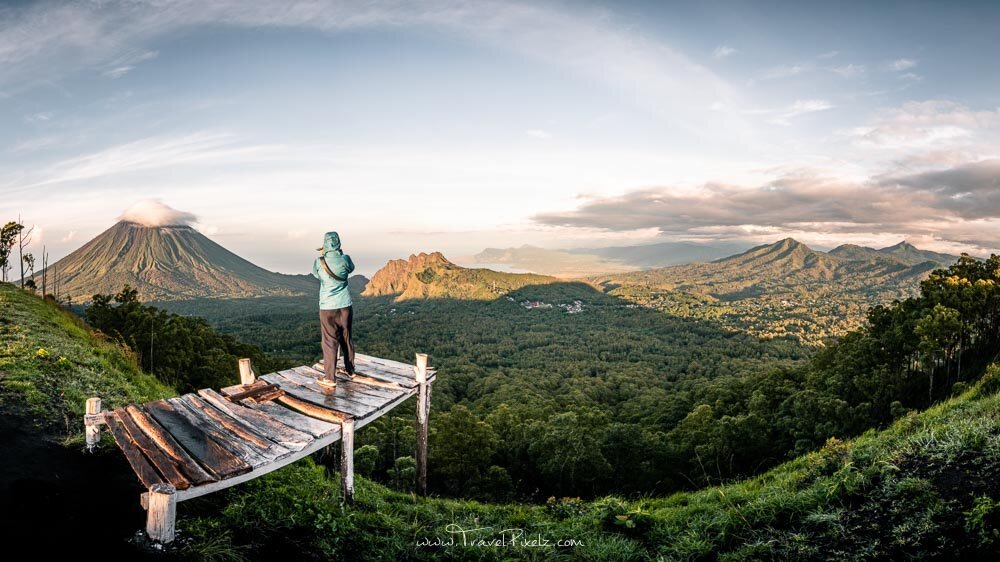Travel photography is more than just a visual record of far-flung destinations; it’s a window into the heart and soul of the places we visit. It has the unique power to transport us to other cultures, landscapes, and experiences without ever leaving our homes. Through the lens of a camera, photographers capture not only the beauty of a place but the essence of a moment, the emotions it evokes, and the stories it tells. But what is it that we truly see when we look at travel photography? What is it about these images that resonate with us so deeply?
In this article, we’ll explore how travel photography shapes our perceptions of the world and the powerful feelings it stirs within us. From its ability to capture fleeting moments to its role in bridging cultural gaps, travel photography opens doors to understanding and empathy.
The Power of Visual Storytelling
At its core, travel photography is about storytelling. It captures the spirit of a place, its people, its landscapes, and its daily life. What we see when we look at travel photography isn’t just an image; it’s a narrative waiting to be discovered. Each photograph tells a story of the photographer’s journey and the emotions they felt in that moment. A single picture of a street market in Marrakech, a sun-drenched beach in Bali, or a mist-covered temple in Kyoto speaks volumes about the culture, the atmosphere, and the energy of those locations.
Colors and Textures
These photographs are often filled with rich details that invite us to dig deeper. The way the light falls across the landscape, the expressions on people’s faces, the interplay of colors and textures—all of these elements combine to create a visual representation of the photographer’s experience. By capturing these fleeting moments, travel photography gives us a chance to see a place as it truly is, often revealing hidden layers of beauty and meaning we might have otherwise overlooked.
Travel Photography
When we look at travel photography, we are invited to step into the shoes of the photographer and experience the world through their eyes. What we see when we look at travel photography is not just a landscape or portrait; it’s an invitation to connect with the culture, the environment, and the story behind the image.
The Emotional Impact of Travel Photography
What we see when we look at travel photography isn’t just about the visual elements; it’s about how those images make us feel. Travel photography has a profound emotional impact, stirring feelings of wonder, joy, nostalgia, and even longing. The powerful emotions evoked by these images allow us to connect with distant places on a personal level.
Emotional Responses
For example, an image of a bustling city street can make us feel energized, alive, and connected to the pulse of the world. A serene photograph of a mountain range, on the other hand, might evoke feelings of calm, peace, and awe. These emotional responses are the heart of travel photography, transforming a simple photograph into a powerful experience.
Photography so Compelling
The ability to evoke these feelings is what makes travel photography so compelling. It enables us to escape our daily lives and immerse ourselves in the sights, sounds, and emotions of far-off places. Whether it’s the joy of discovering a new culture or the melancholy of watching a sunset in a foreign land, travel photography captures those raw emotions and transports us to another world.
Cultural Exploration Through Travel Photography

Travel photography has the ability to bridge cultural divides, offering us a glimpse into the lives of people from different backgrounds. When we look at travel photography, we see more than just a picturesque view or a snapshot of an exotic destination—we see a reflection of the people and cultures that shape those places.
Festival Celebration in India
Through the lens of travel photographers, we gain a deeper understanding of the traditions, customs, and way of life in different parts of the world. Whether it’s a portrait of a local fisherman in the Philippines, a family gathered for a meal in Italy, or a festival celebration in India, these images provide insight into the daily lives of people from all corners of the globe.
Level Beauty of a Place
What we see when we look at travel photography is not just about the surface-level beauty of a place, but about the human experience that underpins it. These photographs serve as a bridge between cultures, fostering empathy and understanding. They challenge stereotypes and encourage us to view the world with a broader perspective, reminding us that, despite our differences, we are all connected by our shared humanity.
The Role of Travel Photography
Travel photography is also an important tool in raising awareness about environmental issues and conservation efforts. Many photographers use their craft to highlight the beauty of the natural world and, in doing so, bring attention to the urgent need to protect it. Images of pristine landscapes, endangered wildlife, and vulnerable ecosystems can inspire a deep sense of responsibility and a desire to act.
Protect the Rainforest
What we see when we look at travel photography can have a lasting impact on how we view the environment. A powerful image of a coral reef, for example, might ignite a passion for marine conservation, while a photograph of a deforested area might spur efforts to protect the rainforest. These images are not just beautiful; they are a call to action, urging us to take better care of our planet.
Future Generations
Photographers who focus on conservation work often strive to create images that not only showcase the magnificence of nature but also highlight the challenges it faces. By capturing both the beauty and fragility of the natural world, they encourage us to take a more active role in preserving it for future generations.
The Accessibility of Travel Photography
With the rise of social media and digital platforms, travel photography has become more accessible than ever before. Today, anyone with a camera can share their experiences and transport others to different parts of the world. Platforms like Instagram, Pinterest, and Flickr allow photographers to share their work with a global audience, making travel photography a shared experience for millions.
Culture and Exploration
What we see when we look at travel photography online is a curated selection of images that highlight the best of the world. These images inspire wanderlust, encourage exploration, and foster a sense of connection among people who share a love of travel. Social media also allows for more diverse voices to be heard, as photographers from all over the world contribute to the global conversation about travel, culture, and exploration.
Discovery and Connection
Through the sharing of travel photographs, we create a virtual community of explorers, dreamers, and storytellers. Whether we’re sharing our own images or admiring the work of others, travel photography connects us to a larger narrative of discovery and connection.
The Lasting Impact of Travel Photography
What we see when we look at travel photography is much more than just a pretty picture. It’s a story, an emotion, a lesson, and a connection to the wider world. Travel photography allows us to experience the world in new ways, to feel what others feel, and to see things we may never have the chance to experience firsthand. It opens our minds and hearts, teaching us about different cultures, diverse landscapes, and the beauty of the human experience.
As we continue to explore the world through the lens of travel photography, we deepen our understanding of ourselves and the world around us. Whether we are looking at images from a favorite destination or discovering a new place for the first time, travel photography remains a powerful tool for both personal discovery and global connection.
Conclusion
In the end, travel photography is more than just an art form; it is a means of communication, a form of emotional expression, and a way to connect with the world in a way that words alone cannot. Through the eyes of a photographer, we see the world not only as it is but as it can be—a beautiful, complex, and endlessly fascinating place.





